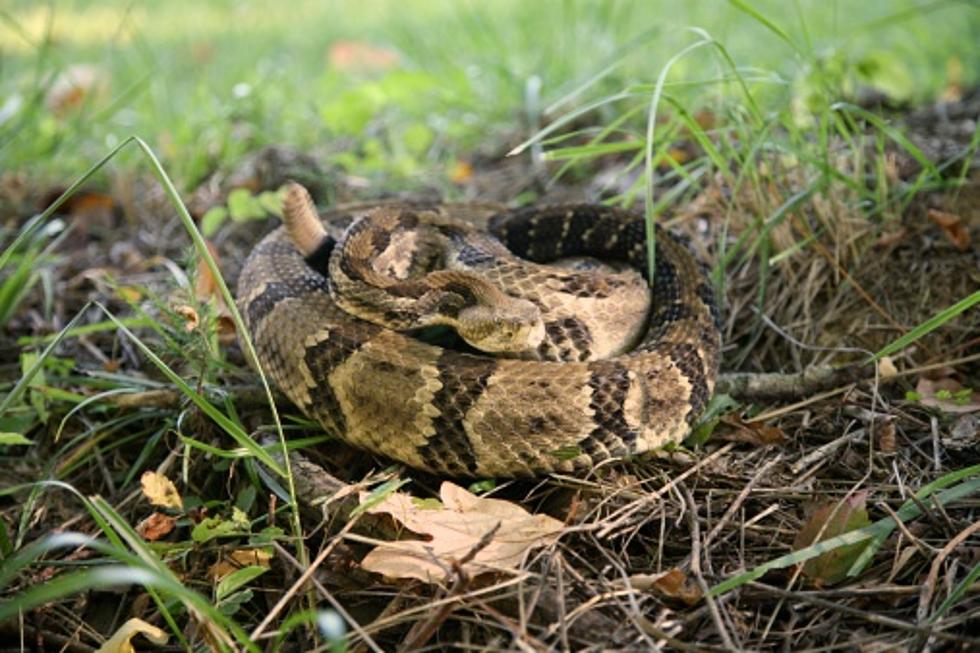
Watch Out: New Hampshire’s Most Dangerous Snake Could Kill You With Its Bite
When it comes to creatures I am terrified of, snakes are surprisingly low on the list. Don't get me wrong, I am not getting one as a pet any time soon, nor would I welcome one slithering around my feet in my backyard. But I find rodents much more disturbing than snakes, lizards, etc.
It is unsettling to know that in New Hampshire, there is a venomous snake that could cause some deadly damage to you or your loved ones. It's called the timber rattlesnake. Though they are very rare, it is still good to be aware of these creepy crawlies, in the rare event that one should ever cross your path.
According to New Hampshire Fish and Game, there are 11 species of snakes that are native to New Hampshire. Some of these species, such as the garter snake, are common and widespread across the state. Other species like the timber rattlesnake are extremely rare, and are now state-protected.
New Hampshire Fish and Game goes on to explain that snakes are poorly studied, and basic life history information is lacking. The department maintains a database of all reptile and amphibian reports through its Reptile and Amphibian Reporting Program (RAARP). The first step to reporting a sighting is accurately identifying the species.
So, what does a Timber rattlesnake look like?
This guy (or gal, is it wrong I assume all snakes are men?) has a wide head and narrow neck with a large, heavy body. They also have the characteristic rattle on the end of the tail, hence the name "rattlesnake". Adults typically reach lengths of two-and-a-half to five feet, but there are reports of timber rattlesnakes growing up to seven feet long. WELL THAT'S TERRIFYING.
In terms of the pattern shown on the body of the snake, it is usually an irregular-striped pattern, with narrow dark bands alternating with lighter green-brown bands (sounds like a pattern I would want on some snakeskin pants). Although the majority of these snakes do have a striped pattern of green or brown scales, many of these snakes are much darker, and in some cases, entirely black. CREEPY.
What makes this snake so dangerous?
Its long fangs, impressive size, and high venom yield make this snake one of the most dangerous in North America. Thankfully, due to their relatively mild disposition and a long hibernation period, the numbers of attacks on people are relatively few and far between.
What are symptoms of a Timber rattlesnake bite?
Skin around the bite will typically swell and turn black, and may slough off as the skin heals. Symptoms include local pain and swelling, nausea, vomiting, stomach cramping and diarrhea, and muscular spasms throughout the entire body.
According to Dovemed.com, most people survive a timber rattlesnake bite if they respond quickly. The site suggests you call 911 and lie or sit down while waiting for help. Keep the bitten body part below the level of your heart. Wash the bite with warm, soapy water, and cover it with gauze or a Band-Aid.
New Hampshire Fish and Game ask that if you think you spot a timber rattlesnake out in the wild, kindly leave it alone. The timber rattlesnake is protected by law, so reach out to New Hampshire Fish and Game and let them know where and when you spotted the viper by contacting them at 603 271-3421.
10 Hilarious Ways Outsiders Can Tell You Grew Up in New Hampshire
Gallery Credit: Megan
Did You Know These 30 Animals Are on New Hampshire's Endangered Species List?
Gallery Credit: Megan
More From Q97.9









